Today Leica launched a full-frame mirrorless camera built in Germany to M-standards and with an integral viewfinder. From the X compact, through the X and X Vario, all European-made Leicas up to now have had to slum it with an external electronic viewfinder perched on top.
Many assumed Leica was reluctant to build a camera with an integral viewfinder because of the possibility that it might cannibalise sales of the venerable and expensive M. But this is clearly not the case.
Today’s announcement of the Leica Q is designed to answer the prayers of Leica owners, although many will suffer a tinge of disappointment when they learn that this is a fixed-lens and not a system camera. But what a lens. The Q sports a 28mm Summilux ASPH (or, perhaps, we should say Summilux-minus-one-stop because, like the lens of the X compact, its widest aperture is f/1.7). Nevertheless, this is a potentially great lens.
Stabilisation, 50000 ISO
The rest of the camera is also extremely impressive. It features a 24MP CMOS sensor, similar to that in the M and M-P but with an enhanced ISO performance of up to 50000, in-lens stabilisation, a new Maestro II image processing engine (similar to that used in the Leica S) and a solid build quality to equal the M. The top and bottom plates are machined from aluminium and the body is made from magnesium alloy. The 3.68 million dot viewfinder offers a class-leading specification. It certainly overshadows the M240’s VF-2 accessory finder.
Other features of this ground-breaking camera include full-HD video, wifi and remote control, a touch-panel screen (optional use), focus peaking, live-view zoom and continuous shooting up to 10 fps.
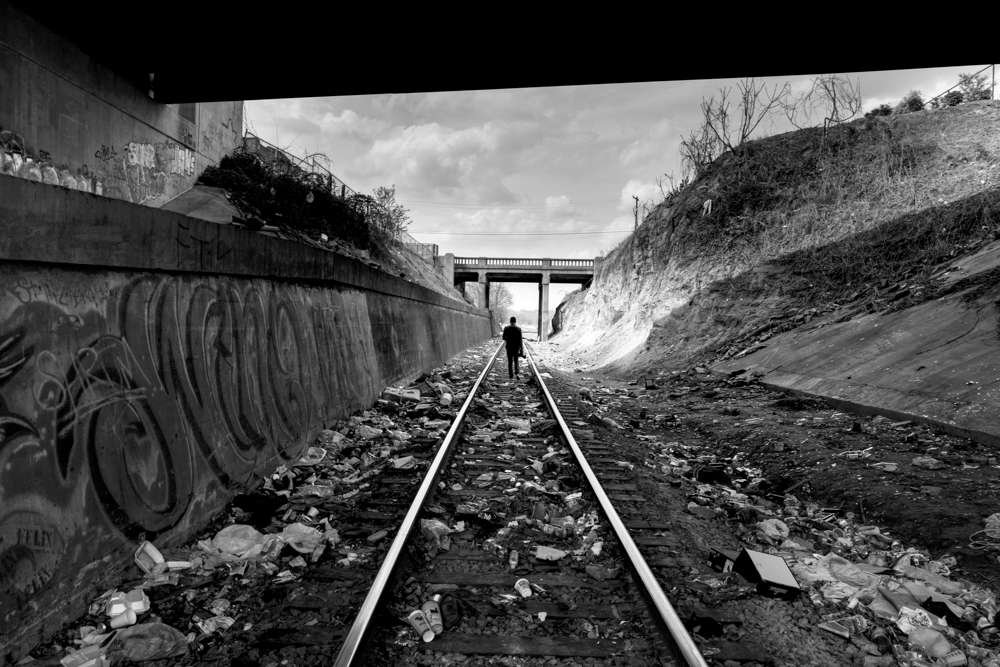
The Q is also very keenly priced at £2,900 including VAT. It may sound a lot to non-Leica ears but the entire outfit, camera and fixed lens, is all of £1,000 cheaper than the new 28mm Summilux-M lens alone. More to the point, it is no more expensive than the recommended price of its nearest and only competitor, Sony’s RX1R together with its external viewfinder. This is something of a first for Leica and the word bargain springs to mind.
28mm wide angle
But why does the Q have a 28mm and not a 35mm lens like the RX1? A thirty-five is generally supposed to be the gold-standard focal length for street and general photography. I suspect Leica reasoned that 28mm on a full-frame sensor, which is eminently cropable to 35mm or, even, 50mm, offers the greatest versatility. It is significant that the Q includes two fixed, cropped focal lengths of 35mm and 50mm, similar the arrangement on the Ricoh GR APS-C compact. While this trick adds nothing you cannot achieve equally well in Lightroom, it is practical in helping more accurate framing and composition as I found recently during my test of the Ricoh.

Stabilisation is another welcome feature and a first for Leica on its German-made rangefinder and compact cameras. Together with the impressive ISO range, not quite as wide as that of the Sony A7s but pretty darn good, the stabilisation means that the Q cannot help but be a super low-light performer.
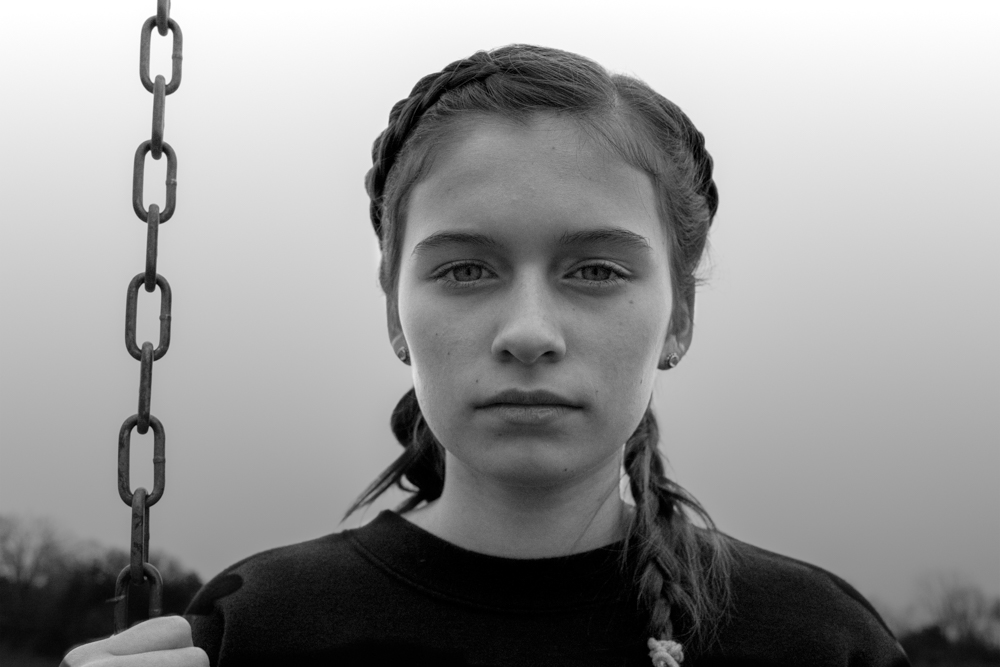
Hands on
This morning at Leica Mayfair I had the opportunity to handle one of the first Leica Qs in the country and I was immediately impressed by the firm, solid construction. This is very much the small M, looking much like a Monochrom but nearer to an M3 in size. There is no reason why the Q should not perform just as well as an M or M-P fitted with a 28mm Summicron or Summilux lens. In fact, when the benefit of stabilisation and high sensitivity is taken into consideration, the Q is likely to be a far better proposition in low-light conditions.
The design of the lens is masterly. It contrives to look more like an M-mount optic than the common-or-garden auto lens found on the X, X Vario or T. Here you can enjoy an M-like aperture ring (at the front, as the gods intended) and a traditional focus ring with depth-of-field scale. There is also a macro ring, nearest the camera which, when engaged, flips the focus scale to provide a true macro depth-of-field view. The focus tab, another welcome crossover from modern M lenses, has a tiny button which acts as a detente between auto and manual focus.
The viewfinder is also something of a masterpiece, with its 3.68MP resolution, and it is one of the best, if not the best, finders I have experienced. The implementation of the crop zoom is different to accepted practice where the full area of the viewfinder is used for the narrower image. On the Q we get M-like framelines in white to show the 35mm or 50mm options. This is preferable, in my opinion, and, particularly with the 50mm crop, allows anticipation as you see subjects approaching the field of view. Just like the M, in fact. Crop images are available only in JPG with the full image always recorded in RAW. In common with the X cameras and the T, the Q insists on shooting both JPGs and DNG but I am told that a firmware update might allow RAW-only shooting. But it would be good to retain the framelines for compositional purposes even if shooting exclusively DNG.
Autofocus is incredibly fast, Leica claim 0.15s and I wouldn’t dispute it. It is almost like real-time focus, so fast is it. Implementation of manual focus is also brilliant, with auto magnification possible, initially at 3x and optionally at 6x by pressing a function button. All in all, this appears to be a well thought out camera. There is only once criticism I can level: The video button cannot be disabled in the menus. This is the same problem seen on the X and X Vario and leads to unwanted videos and a deal of frustration. Let’s hope this can be addressed quickly in a firmware update.
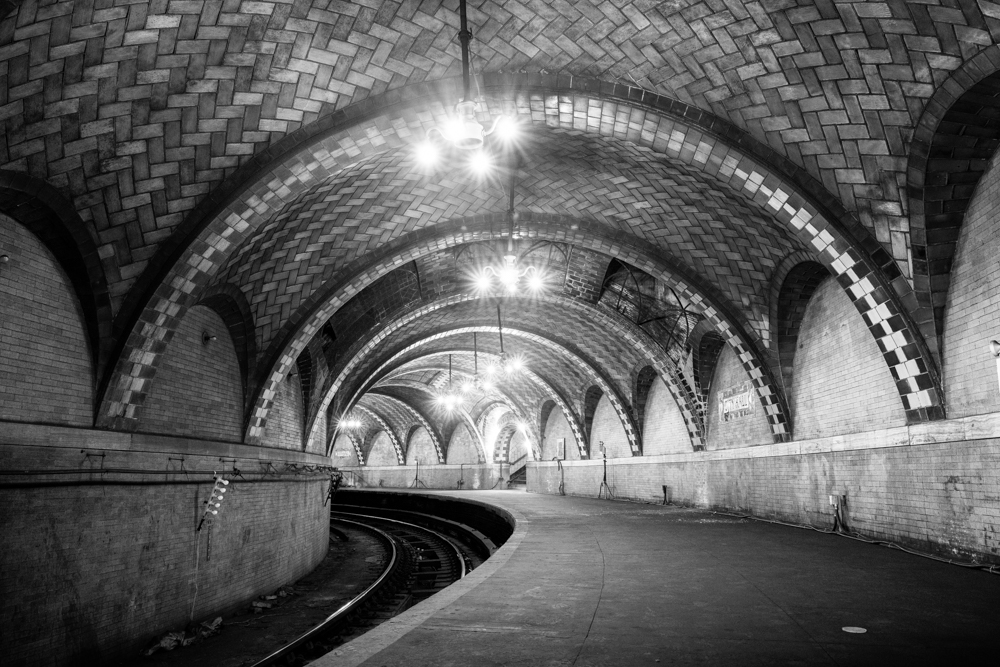
Over the past few years I have watched a succession of Leica compacts come to the market but I have not felt as enthusiastic and positive as I now do about the prospects for the Q. I have always disliked hotshoe-mounted electronic viewfinders and, now, Leica has finally listened to its customers. This must augur well for future Leica offerings. As a travel camera, even as a second-body backup to an M, this new Q should be a winner. After trying and using the camera this morning I am more enthusiastic about this, particularly at the £2,900 price, than any recent Leica addition.
Leica tell me that the Q should be in the stores within a few days and I expect heavy initial demand. It really is that good. Did I say I like it?
__________________________________________________________________________
Pre-release reviews
- Jono Slack
- Ming Thein
- Sean Reid (requires subscription–highly recommended)
__________________________________________________________________________
Leica press release
EMBARGO 10th June 2015, 2.00pm GMT
Leica Camera today introduces the first of a new line of digital compact cameras: the Leica Q.
With a full-frame sensor and a particularly high speed, classic focal length prime lens, the camera stands out thanks to its fast and intuitive handling. Its Leica Summilux 28mm f/1.7 ASPH. lens makes it ideal for shooting in available light situations and has an angle of view that reproduces scenes with natural perspective and proportions. This makes the Leica Q the perfect camera for street, architectural and landscape photography.
With a 24 MP, full-frame CMOS sensor precisely matched to its lens, the camera delivers richly detailed exposures with extremely low noise at optimum quality, at ISO sensitivities up to 50,000. Furthermore, with the option of switching between macro, automatic and manual focusing, the Leica Q offers the greatest possible creative freedom, allowing the user to achieve even the most demanding of photographic ambitions.
To ensure that the ‘decisive moment’ is never missed, the Leica Q full-frame compact camera offers the fastest autofocus in its class, as well as almost real-time precision focusing. At the same time, its newly developed Leica Maestro II image processor, specifically adapted for the Leica Q, processes the data from the sensor at an enormous speed and delivers up to ten frames per second at full resolution. Ensuring reliable control of subject composition at this speed, the Leica Q also features an integrated viewfinder with a resolution of 3.68 MP. Even the finest details of each exposure are displayed without any perceptible lag.
The digital frame selector of the Leica Q allows further creative opportunities – alternative subject framing can be selected with the press of a button. In addition to the focal length of 28mm at full resolution, this function also offers the equivalent of shooting with 35 and 50mm lenses. The corresponding frames are displayed in the viewfinder.
As with a rangefinder camera, photographers can view the areas outside the bright-line frame, and can react much more quickly to changes in and around the subject. The selected framing is preserved in the JPEG image files, while the RAW files in DNG format record the entire field captured by the 28mm lens.
The Leica Q continues the Leica tradition of concentrating on ‘the essentials’ in terms of its design. The ‘made in Germany’ seal of quality guarantees that only the finest materials are employed in its construction, ensuring exceptional durability. The top plate is machined from solid blocks of aluminium, the body is made of magnesium alloy, and all lettering and markings on the setting dials are laser-engraved. The thumb rest on the back of the camera and the diamond pattern of the exterior finish ensure a steady grip.
With its ergonomic design, all functions of the Leica Q are clearly laid out and logically positioned. The clear menu provides rapid access to all essential features and also offers custom programming options: for example, convenient definition of the autofocus limits by key control. Alternatively, the touch screen can be used for focusing by eye, or the focusing point can be selected with a simple touch of a fingertip. In manual focusing mode, Live View offers two additional electronic focusing aids: Focus Peaking shows points in the subject that are sharply focused by the coloured highlighting of edges, and Live View Zoom simultaneously allows the photographer check the sharply focused parts of the scene with up to six-fold magnification. With the Leica Q, the photographer is always in control. The two essential parameters for photography – aperture and shutter speed – can be read from the corresponding controls and set, even when the camera is switched off.
Furthermore, when shooting in video mode, photographers can benefit from the exceptionally high speed and unmistakable bokeh of the Leica Q lens. Video recorded in full HD with the Leica Q is indistinguishable from professional movie footage.
Depending on the scene, the photographer can choose between 30 and 60 full frames per second for video recording in MP4 format. An integrated wind-noise filter guarantees crystal-clear sound.
The Leica Q features an integrated Wi-Fi module for wireless transmission of still pictures and video to other devices and remote control by WLAN from a smartphone or a tablet PC. The Leica Q app for control of these features can be downloaded free of charge from the Leica website. In addition to remote release and display of the viewfinder image, the app allows the photographer to set their chosen aperture and shutter speed.
Software and accessories
Adobe® Photoshop® Lightroom®, a professional digital workflow solution for Apple Mac® OS X and Microsoft Windows®, is included with the Leica Q. This digital image processing software offers a comprehensive range of functions for the management, processing and presentation of digital image data. Leica Q customers can download the software free of charge from the Leica website after registering their camera.
An extensive range of accessories and premium bags and cases is also available for the Leica Q. These include an ever-ready case, a holster, a protector and a day bag (all manufactured exclusively for the Leica Q in finest black leather), system bags in various sizes and styles, hand straps and carrying straps, as well as accessories including the Leica SF 26 flash, a handgrip, table- top and travel tripods, and a selection of ball heads (please visit www.leica-camera.co.uk for further details). Just like the camera, all Leica Q accessories are designed for easy handling, and are manufactured from the highest quality materials to ensure versatility, reliability and a lifetime of use.
Availability and pricing
The Leica Q is available now from authorised UK Leica dealers at a suggested retail price of £2,900 including VAT.
Technical Specifications:
Camera type: Leica Q (Typ 116), digital compact camera 24 x 36mm/2:3
Picture format/aspect ratio: 24 x 36/2.3
Lens: Leica Summilux 28mm f 1.7 ASPH., 11 lenses in 9 groups, 3 aspherical lenses
Digital frame selector (digital zoom): optional: approx. 1.25x (corresponding to 35mm) or approx. 1.8x (corresponding to 50mm
Image stabilisation: optical compensation system for photo and video recordings
Aperture range: 1.7 to 16 in 1/3EV increments
Picture sensor/resolution: CMOS sensor, 26.3/24.2 million pixels (total/effective)
Dynamic range: 13 aperture stops
Colour depth:14 Bit
Photo capture format: optional: DNG + JPEG, JPEG
DNG/JPEG resolution: 24MP (6000×4000 px), 12MP (4272×2848 px), 6MP (2976×1984 px), 1.7MP (1600×1080 px)
Video recording format: MP4
Video resolution/frame rate: optional: FHD 1920 x 1080p with 60 or 30 B/ or HD 1280 x 720p with 30 B/s
Sound recording format: AAC
Microphone: Stereo
Loudspeaker: Mono
Storage media: SD/SDHC/SDXC
ISO range: automatic, ISO 100 to ISO 50,000
White balance: automatic, default settings for: daylight, cloudy, halogen lighting, shadow, electronic flash, two manual settings with measuring, manual colour temperature setting
Colour range: optional for photos: sRGB, Adobe® RGB, ECI RGB Focus/saturation/contrast: each selectable in 5 steps, for saturation also in B/W
Focusing Working range: 30cm to ∞, with macro setting from 17cm
Setting: automatic (autofocus) or manual focusing, option of magnifying function and edge marking (focus peaking) available for manual setting
Autofocus system: contrast-based autofocus system
Autofocus modes: (shutter release only after successful focusing), (shutter release possible at any time), AF setting can be saved
Autofocus metering methods: 1-field (adjustable), multi-field, face recognition, subject tracking, optional setting/shutter release by touching the monitor
Exposure modes: automatic program, aperture priority, shutter speed priority, and manual setting
Scene modes: fully automatic, sport, portrait, landscape, night portrait, snow/beach, candlelight, sunset, digiscoping, miniature effect, panorama, time lapse
Exposure metering methods: multi-field, centre-weighted, spot
Exposure compensation: ±3EV in 1⁄3EV increments.
Automatic bracketing: three pictures in graduations of up to 3 EV, can be set in 1⁄3EV increments
Shutter type: mechanical and electronic
Shutter speeds: 30s to 1⁄2000s with mech. Shutter 1⁄2500s to 1⁄16000s with electr. shutter, in 1⁄3 increments, flash synchronisation up to 1⁄500s
Picture series: optional 10/5/3B/s (H/M/L)
Self-timer: delay time either 2 or 12s
Viewfinder: electronic LCOS display, resolution: 1280×960 pixels x 3 colours (=3,68MP), aspect ratio: 4:3 adjustable ±3 dioptre, with eye sensor for automatic switching between viewfinder and monitor
Monitor: 3″ TFT LCD monitor with approx. 1,040,000 pixels, touch control possible
WLAN: satisfies IEEE 802.11b/g/n standard (standard WLAN protocol), channel 1-11, encryption method: WLAN- compatible WPATM / WPA2TM, access method: infrastructure mode
NFC: according to JIS X 6319-4 standard / 13.56MHz
Connections: Micro USB socket (2.0), HDMI socket
Power supply: Leica BP-DC12, lithium ion battery, rated voltage 7.2V (7.2V D.C.), capacity 1200mAh
Charger: Leica BC-DC12, input: 100–240 V AC, 50/60Hz, automatic switching, output: 8.4V DC; 0.65A
Body: Leica design made of massive, extremely light magnesium and aluminum, two loops for the carrying strap, ISO accessory shoe with centre and control contacts to connect flash units
Lens filter thread: E49
Tripod thread: A 1⁄4 DIN 4503 (1⁄4”)
Dimensions: (WxHxD) approx. 130 x 80 x 93mm
Weight: approx. 590/640g (without/with battery)
Included in the box: camera, carrying strap, lens hood, lens cap, accessory shoe cover, battery (Leica BP-DC12), charger (Leica BC-DC12), power cable (EU, US, local power cable), USB cable
Software: Adobe® Photoshop® Lightroom® (free download after registration of the camera), Leica App for iOS®
(free download remote control and picture transfer in Apple® App-Store®/Google® Play Store®)

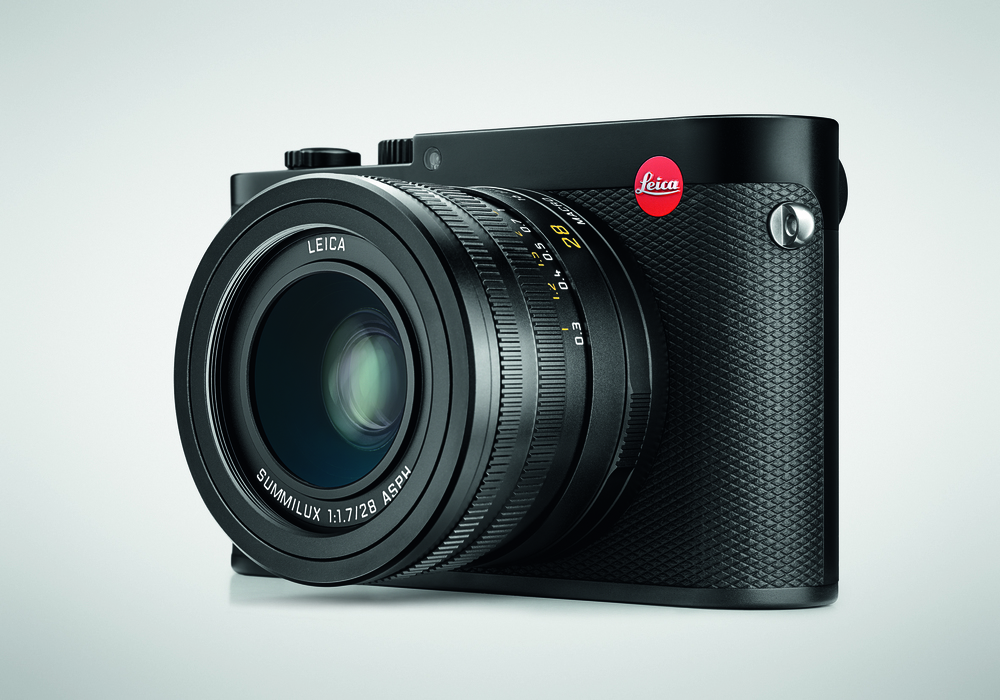
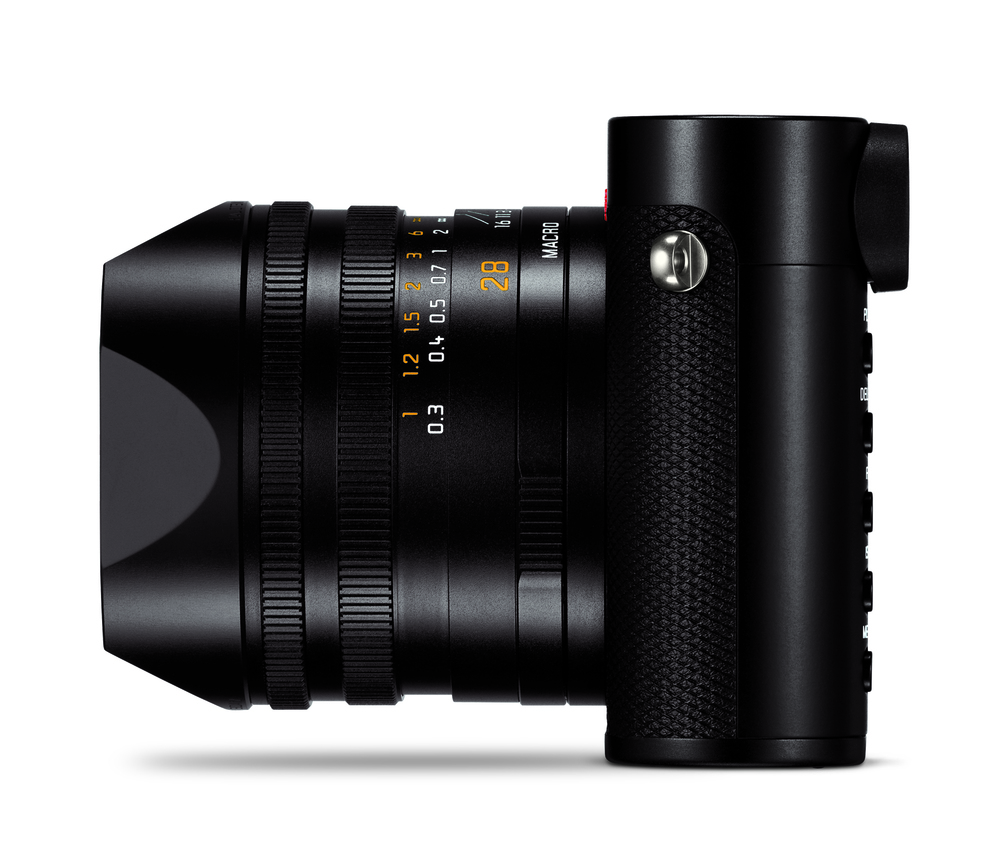
Hello Mike,
The Leica Q sounds like an interesting camera, if only it had an equivalent to the Tri-Elmar lens fitted instead of the 28mm. Then, for me, it would have been perfect as the 28-50mm range would cover most of what I want; for anything longer cropping would still give good quality due to the full frame sensor. As with the Vario, the aperture on a short zoom/tri-elmar would not have to be large.
So nearly a 2015 update of the much-loved Digilux, but not quite (sadly)!
Geoff
You are quite right. It would be a stunner with a variable lens. The problem is that it is full frame and a fast lens would be huge. Experience with the X Vario suggests that even a constant f/4 like the MATE would attract criticism. The mechanical Tri-Elmar is far too expensive, however, and couldn’t be adapted to auto focus. A 28-75 zoom would be all we could expect, ideally using the step-zoom function seen on the D-Lux and others. It would be a huge beast for a fixed-lens camera (look at Sony’s 24-70 FE for confirmation of that) so is pretty unlikely. However, what about a Q with a system mount?
Mike,
I do appreciate the technical limitations of my suggestion, but we can still dream….I realise the Tri-Elmar was a very expensive lens to make, so one suited to the Q would need to be less costly for Leica to produce. As you say, reducing the aperture too much would land them back in the same situation as with the Vario. Of course, if they’d fitted the Vario with a Leica Q EVF at the outset then (for me) it would be ideal, even with a slow lens.
As to the Q with a system mount, this may well be what happens in the future, but my recent experience with 3 fixed-lens cameras has made me realise that I do prefer not having to change lenses so a fixed 28-50mm zoom would be perfect
(if I did have an M, then my only 2 lenses would be a 28mm & 50mm).
Agreed. What we need is a D-Lux with a full-frame sensor! Joking apart, I have just tested the D-Lux and it is an excellent travel tool. For the moment, though, I intend to make the most of the Q. My test camera arrived this afternoon and I am just setting it up.
I’ll look forward to your review (how nice to have one to try so quickly!). It would be interesting to have a dng file to play with, maybe Leica will make some available in due course. I believe the file size is quite large as there is no compression. That reminds me, one other fact about the Q that appeals to me is the lack of anti-alias filter; maybe this camera is the basis for a new range of cameras, including (as you mentioned) a system mount. Then, perhaps, a Q Monochrom? I’d better start saving some money……